Small, potted plants are nice, but if you really want to put a little nature everywhere, then hanging and sitting potted plants could use a little help. To that effect, we’ve compiled a list of 17 indoor trees that you can keep in your home to compliment their smaller brothers and sisters, sweeten up the air, and really bring the ‘wow’ factor right into your home.
We’ve included an assortment of various styles so that there is a little something for every reader and as always, we’ve provided the simplified steps that you’ll need to keep your tree happy, healthy, vibrant, and thriving. Choose one or go with many, putting the tropics in one room, a living desert oasis in another… it’s all up to you.
Without further ado, let’s take a look together and you can see which indoor tree or trees will be gracing your home and moving it closer to that state of peace and perfection that only Nature can provide!
1. Triangle Ficus – Ficus triangularis
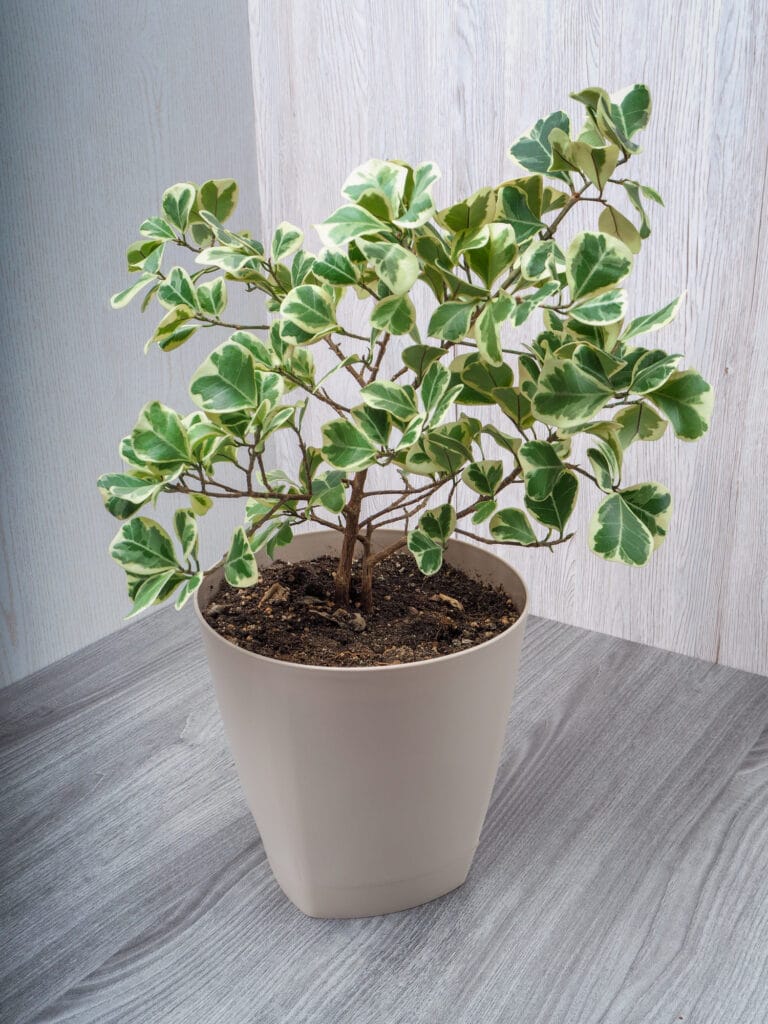
Imagine if someone painted dark green leaves on pieces of triangular, white paper and attached them to the stems of a living tree. It’s a fairly accurate description of this South African fig tree and it looks amazing in your home. As far as indoor trees go, the Triangle Ficus is a great choice. It grows slowly to an eventual top height of 8 feet outside, but in your home it should top out at 4 feet. There is also a variegated Triangle Ficus that is cream colored and dark green!
Soil requirements are pretty basic for this tree, which simply requires regular potting soil with a handful of perlite thrown in to ensure good drainage. Bright, indirect sunlight is best – never full sun, or the leaves will burn, and you should water it when the soil feels dry – approximately every 7 to 10 days in the summer months and every 10 days in winter.
2. Parlor Palm – Chamaedora elegans
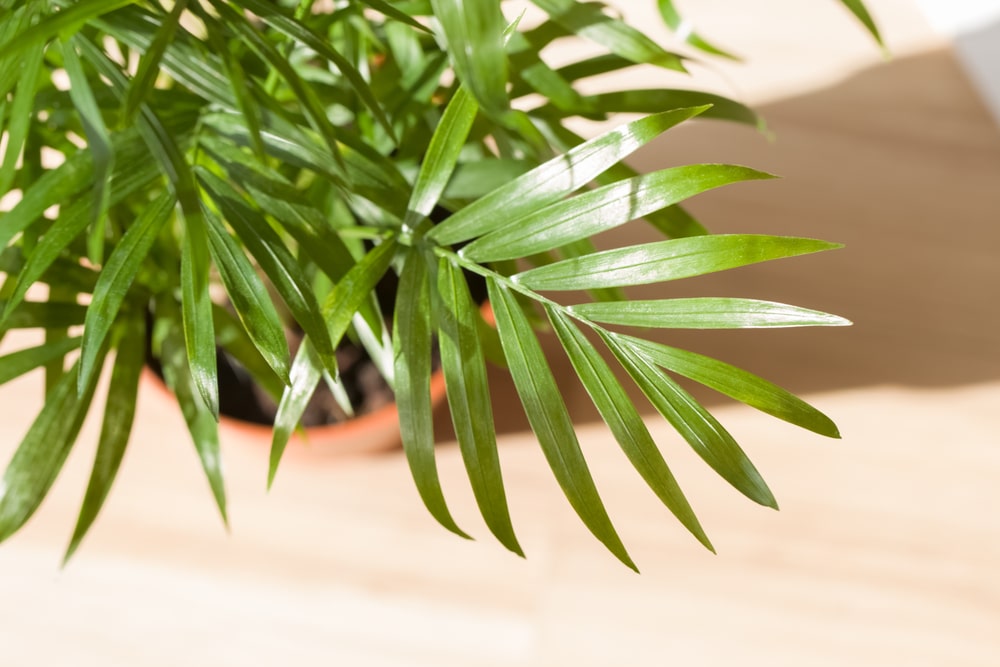
Also known as the Neanthe Bella Parlor Palm, this indoor tree definitely brings a touch of the tropics to your living room, home office, or anywhere else you feel like placing it. This plant has leaves which are long, thin, and dark green and stems much like bamboo – leading to it’s 3rd name of ‘Bamboo Palm’. With a lot of love and care, your own Parlor Palm can grow to be as high as 6 feet, so you won’t need to worry about eventually having to move it outside.
The best soil for the Parlor Palm would be Palm, cactus, or even regular potting soil – provided you’ve got a little perlite on hand for the potting soil. This tree prefers bright, indirect sunlight, but it will tolerate lower light levels – but this will slow their growth. Watering should be done weekly in the warmer months, but once every 2 weeks in the winter should be fine – just let the soil dry out between your waterings and you’ll be good!
3. Madagascar Dragon Tree – Dracaena marginata
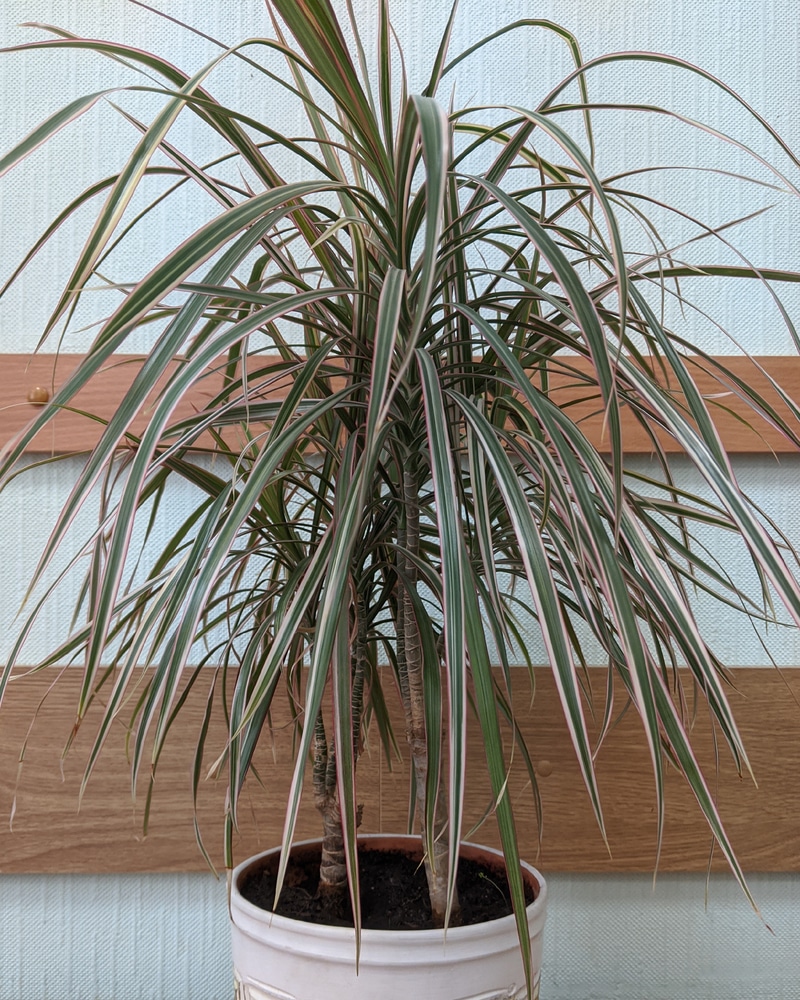
The Madagascar Dragon tree is a beautiful indoor tree that will forgive you if you forget to water every now and again. It has long, thin, and arching leaves which can be found in different colors – green with thick edges of red, green in the center with dark red, thinner edges, and green with red and yellow striped edges. It will grow to be about 6 feet, twisting a little into an aesthetically pleasing shape, and it will definitely add a touch of chic to your home décor.
All-purpose potting mix soil works fine for this tree or for best results, a 50/50 mix of neutral houseplant soil and perlite is just about perfect. Bright, indirect sunlight is best, but this tree will adjust to medium or even low light levels. Like it’s namesake ‘dragon’, this little tree is tough. Watering will usually be needed once a week, just check that the top 2 inches are dry and if so, it’s time to water the Dragon!
4. Weeping Fig – Ficus benjamina
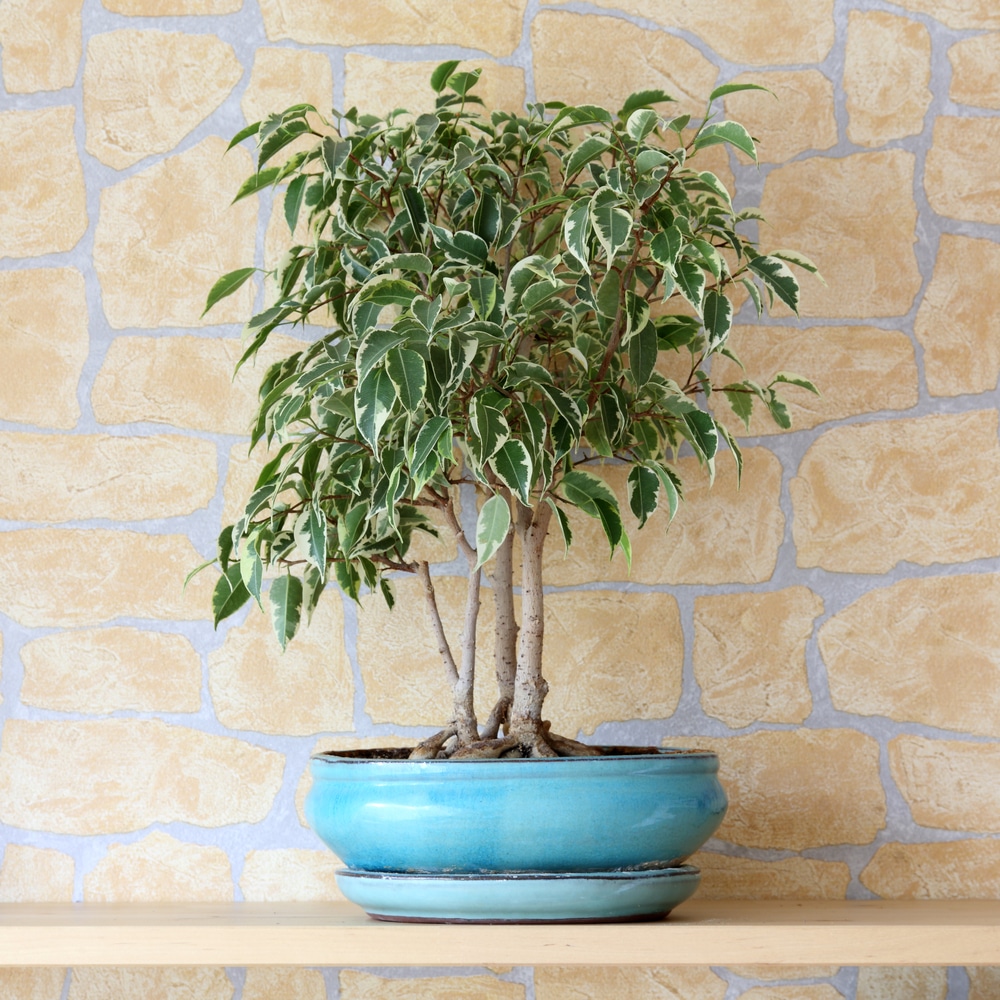
Also known as the ‘Benjamin Fig’ or simply ‘a Ficus tree’, the Weeping fig is a beautiful little tree that would love to live indoors with you. Native to Australia and Asia, this little Ficus is a broad-leafed evergreen with a thin, flexible trunk that is similar to a banyan tree and lovely tapered, shiny leaves which may be found in dark green, green with cream outline, and many other variations. In the home, it should grow to be about 6 feet, or 10 feet if placed outside.
For it’s soil, the best mix will be a standard potting soil with some vermiculite, perlite, and sand mixed in for superior drainage. You should give your tree about 6 hours a day of bright, indirect sunlight, and be careful not to overwater it or it will start dropping leaves – water only when the top 2 inches of soil are dry which should be approximately once a week. During spring, fertilize every 2 weeks for best results with a water-soluble fertilizer diluted to half the strength.
5. Ponytail Palm – Beaucarnea recurvata
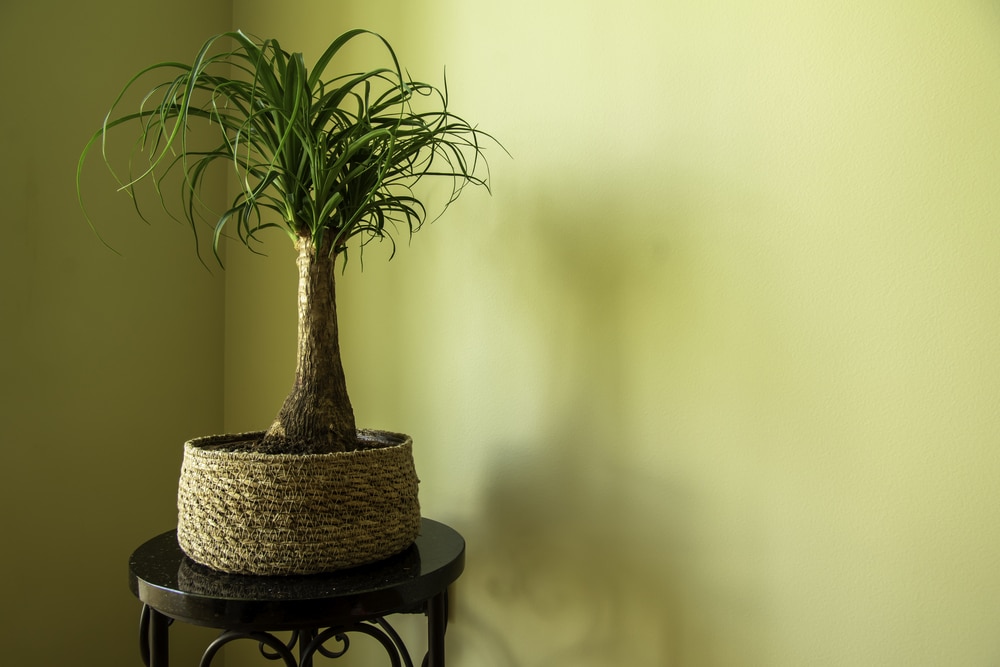
If you want a perfect little Palm in your home, the Ponytail Palm is one of the best. This beautiful Palm is not technically a tree, but an Agave succulent – though you’d never know from looking at it. It has a beautiful mop-top of long, thin green leaves and the trunk just looks like a regular Palm tree trunk, just shrunken down for the home. It should top out at 6 foot tall indoors, if that much!
A perfect soil base for your Ponytail Palm is 1/3 regular potting soil, 1/3 sand, and 1/3 perlite. While this Palm does fine in full sunlight, bright and indirect is okay and it will even adjust to lower light – simply growing at a slower pace. As this little ‘Palm tree’ is secretly a succulent, watering is minimal. Wait until the top 2 -3 inches of soil are dry and then water it and this should come out to once every 2 -3 weeks!
6. Calamondin Orange Tree – Citrus x citrofortunella mitis
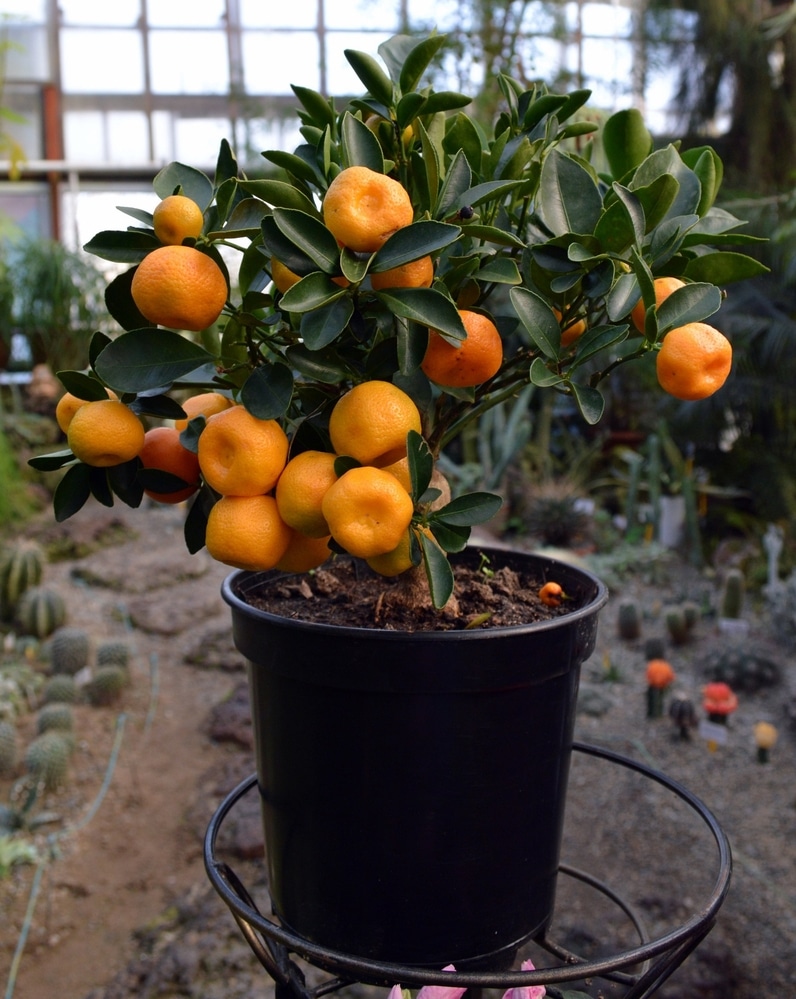
Yes, you can have your very own orange tree growing in your home and what a sweet treat it is! The Calamondin Orange tree grows to be about 20 feet in the wild, but indoors it grows to a modest 4 feet. After it’s 2 years old, it will be giving you oranges too, which it will bear year-round! Leaves are light to medium green on this amazing indoor tree and it has a thin trunk support a large, bushy growth of leaves and oranges, so it’s definitely got a lovely look and a distinctive taste to the fruit – sort of a lemony, tangerine blend, the smell of which will fill the air!
The best soil for your Calamondin is equal parts organic compost, potting soil, and perlite and you should report it every 2 years. You’ll want to give it 4 hours of direct sunlight every day, so it needs to be by a window, and you can give it a growth boost by moving outside temporarily during the warmer months. For watering frequency, check the top inch of soil, and if this dry then give it a thorough watering. This will usually come out to once every 10 days but check your own to find the perfect schedule.
7. Dwarf Umbrella Tree – Schefflera Arboricola
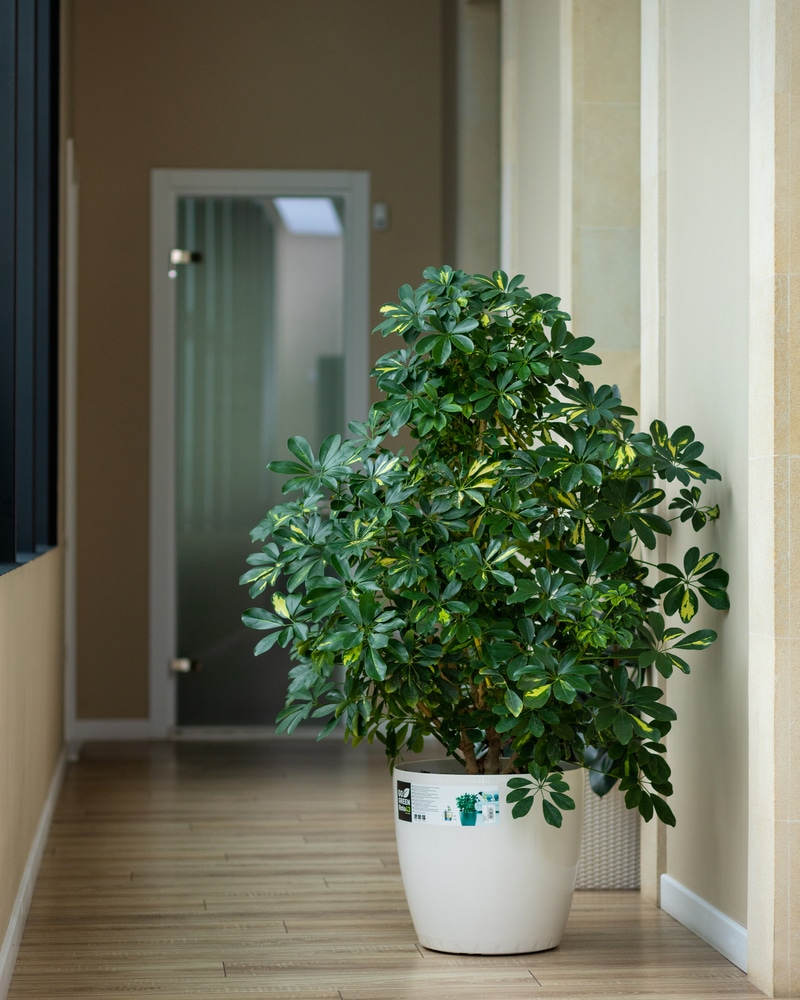
The Dwarf Umbrella tree is a native of Hainan and Taiwan and that is multi-trunked and grows with a lovely spread of small and medium length, oval-shaped leaves which are a waxy dark green, sometimes tinged with yellow. These trees are quite tolerant of the indoor life but you’ll need to trim them from time to time, as while they will usually top out at 4 feet indoors, they can grow as high as 10 to 15 feet on rare occasions. Don’t worry, you’ll know fairly soon, as these trees grow at a rate of about 3 feet every year!
Standard potting soil will work, but a peat-based mix is even better for a Dwarf Umbrella tree. Medium to bright, direct sunlight is best, and they like it humid, so a humidity tray is a good idea. Water it when the top 2 inches of soil are dry, which should be once every 7 to 14 days. If you see it drooping, then increase the water, but if your leaves start turning yellow then you need to give it less.
8. Norfolk Island Pine – Araucaria heterophylla
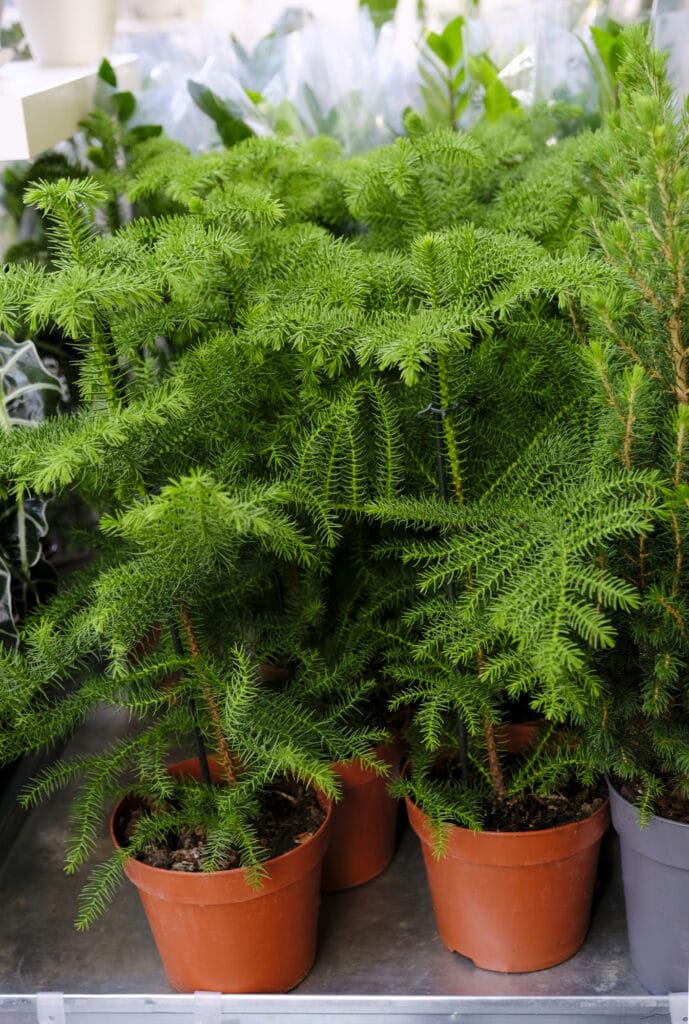
It’s Christmas every day with the Norfolk Island Pine which looks rather like a Christmas tree, but spreads those pretty green needles more like a Palm when it’s young. While it doesn’t smell like a holiday tree, it does purify the air a bit, but you’ll need to keep it trim, as these Norfolk Christmas trees can reach mature heights anywhere from 3 feet up to 8 feet tall.
The ideal soil mix for your Norfolk Island Pine is equal parts regular potting soil, sand, and peat. As far as sunlight, give it full, direct sunlight or bright and indirect sunlight – either will do. Let the soil dry out between your waterings, which should equal watering it once every week or once every 2 weeks, so that the soil is moist but never soaked, as too much water can lead to root rot.
9. Bird of Paradise – Strelitzia reginae
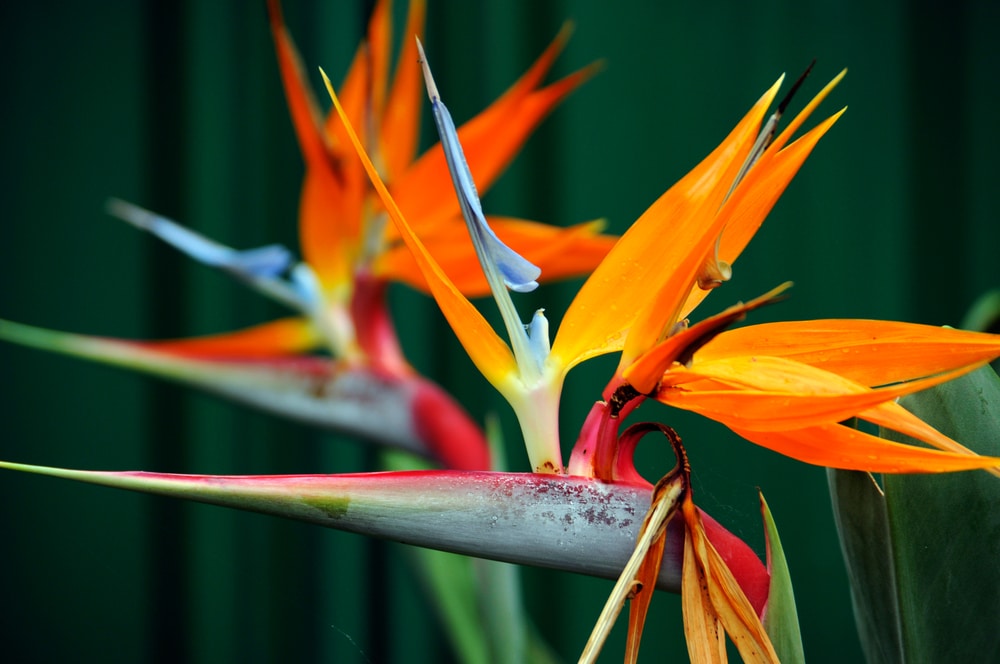
With broad, waxy green leaves and the potential to flower a vibrant orange if it gets enough sun, the Bird of Paradise is just about the perfect tropical accent for adding an exotic charm to your home. You’ll have to be patient, though, as flowering occurs somewhere between 3 and 5 years of age for this tree. As far as height, the Bird of Paradise grows to be a modest 5 or 6 feet, so this wild beauty is quite manageable and a realistic option for your home.
A peat-based soil mix, with a handful of perlite or sand, is a good fit for your Bird of Paradise. This lovely enjoys full sunlight, so find the best window in the house for it and place it there for best results. Watering is actually no chore, just let the soil dry out and water one every week or two weeks, depending on how long the soil takes to dry.
10. Broadleaf Lady Palm – Rhapis excelsa
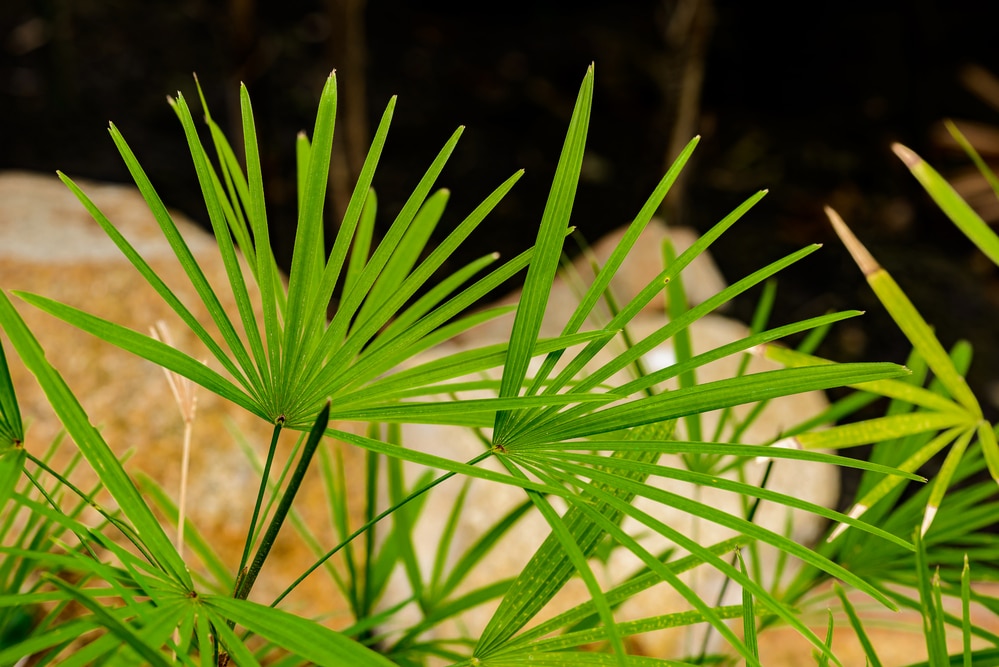
The Lady Palm comes to us from Taiwan and Southern China, and it is a genuine Palm – only smaller. It has lovely, slender stems and the leaves are medium length, thin extended ovals which come in dark green or even a surreal white-green ‘peppermint’ leaf variety. While it will generally stop growing at 6 feet, there are rare exceptions, so keep in mind that you might eventually need to prune it a little.
African Violet potting soil mix is ready-made and perfect for your Broadleaf Lady Palm. Give it bright, but indirect sunlight and it will be happy – just never direct, as the leaves can burn. Finally, just water it every time the top 2 inches of soil are dry, approximately once every 7 to 10 days.
11. Alii Ficus – Ficus maclellandii “Alii”
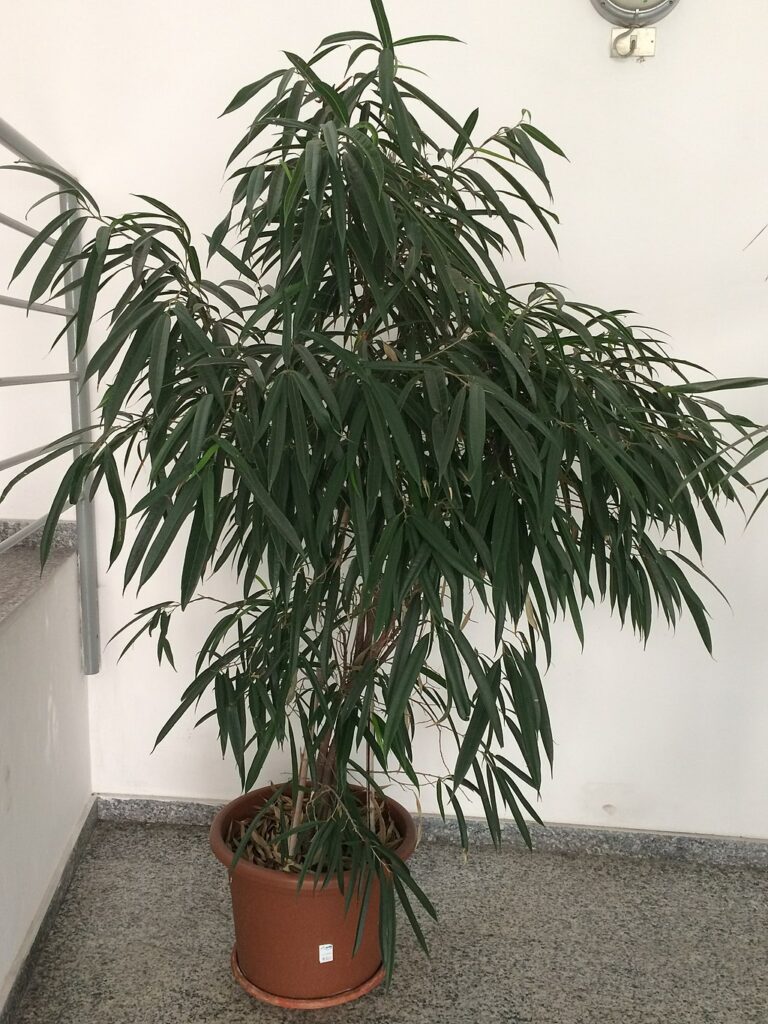
Native to China, Southeast Asia, and India, the Alii Ficus is a lovely little fig tree that you can grow at home. This small evergreen tree is also known as a ‘Banana Leaf Fig’, due to the long and slender, dark green leaves that are similar to what you’d see on banana trees. As it gets taller, you’ll get a nice glimpse of the svelte, handsome trunk and it will look more and more like a little Palm tree – though keep it pruned, as it can reach eventual heights of up to 10 feet indoors!
Standard potting soil mixed with perlite should do nicely and you’ll want to fertilize this tree once a month from spring through fall with a water-soluble fertilizer. Bright, indirect sunlight is a must, so give your tree lots of it, and water it every 7 to 10 days or whenever the top 2 inches of soil are dry.
12. Burmese Fishtail Palm – Caryota mitis
The Burmese Fishtail Palm gets it name from it’s triangular, clustering leaves, which are light green in color and rather resemble a fishes’ fins! Native to India, Sri Lanka, and Myanmar, the Burmese Fishtail is a fast grower, climbing 6 to 8 inches every year to an eventual mature height of 6 to 10 feet indoors.
For best results, house your Burmese Fishtail in a peat-based soil mix, with perlite and coir added into the mix. Bright and indirect sunlight is best, but these Palm trees are troopers and will grow in just about any light! Water your Burmese Fishtail once a week in the spring and summer and twice a month in the winter, just don’t splash any water on the leaves – this can promote disease in your Burmese.
13. Yucca – Yucca elephantipes
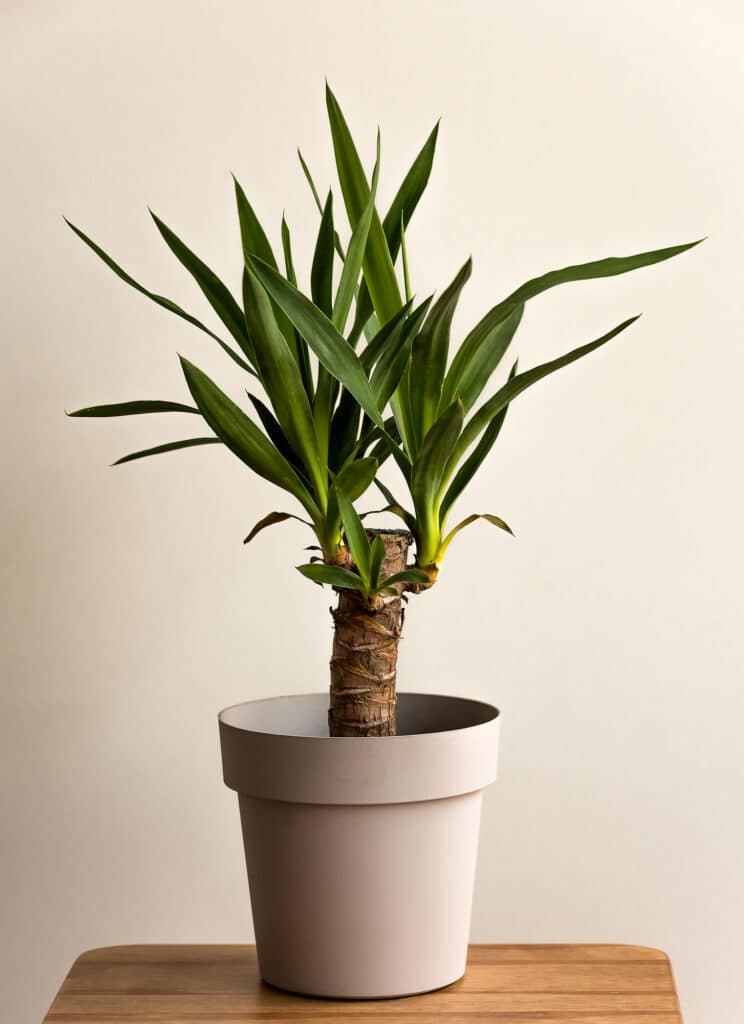
Beautiful, low-maintenance, pest-resistant, and easy to propagate if you wanna share with your friends – the Yucca is simply wonderful as an indoor tree. It got a lovely, stout little trunk of light brown with exotic folds and long, ‘alert’ leaves standing up in a vibrant light and dark green state of attention. Different varieties will get different sizes (, but if your Yucca gets too tall you can simply cut at the base of the trunk, repot it, and it will grow just fine. Mark the top of the piece you’ve cut off and give it a friend, and they can grow their own Yucca too!
Your best soil choice for your Yucca will be an equal mix of regular potting soil, perlite, and coarse sand and it should receive full or at least partial exposure to full sunlight – these beauties like it hot! Despite their love for hot and sunny conditions, watering is minimal for these trees. Once every 7 to 10 days will be fine, provided that the top 2 inches of soil are dry.
14. Olive Tree – Olea europea
Yes, you can grow an olive tree indoors, but this comes with a caveat. It will only live 8 or 9 years at most this way, but you can get around this by either planting it outside eventually and getting another olive tree or moving it outside during the warmer months so that it can taste a little nature directly. That said, there is something charming and very old world about having your own indoor olive tree. Just keep in mind that these can grow to be up to 30 feet eventually and if you don’t want to move it outside, you can always go with a dwarf variety – You’ll still get that lovely, slender trunk and those pretty clusters of tiny, dark and light green leaves, but no olives and a top height of 6 feet indoors.
For your Olive tree’s soil, a mix of standard potting soil and either small rocks or perlite will do, as these trees like their soil well-draining and on the rocky side. No indirect sunlight for these guys – they want full sunlight and as much of it as possible. As far as watering, for the first year you should water it once a week or everytime the top 2 inches of soil are dry. After your tree is ‘established’ for a year, a deep watering once a month should be sufficient as these trees are highly resistant to drought. Just check the top soil for dryness and you’ll know when your tree is thirsty.
15. Chinese Fan Palm – Trachycarpus fortunei
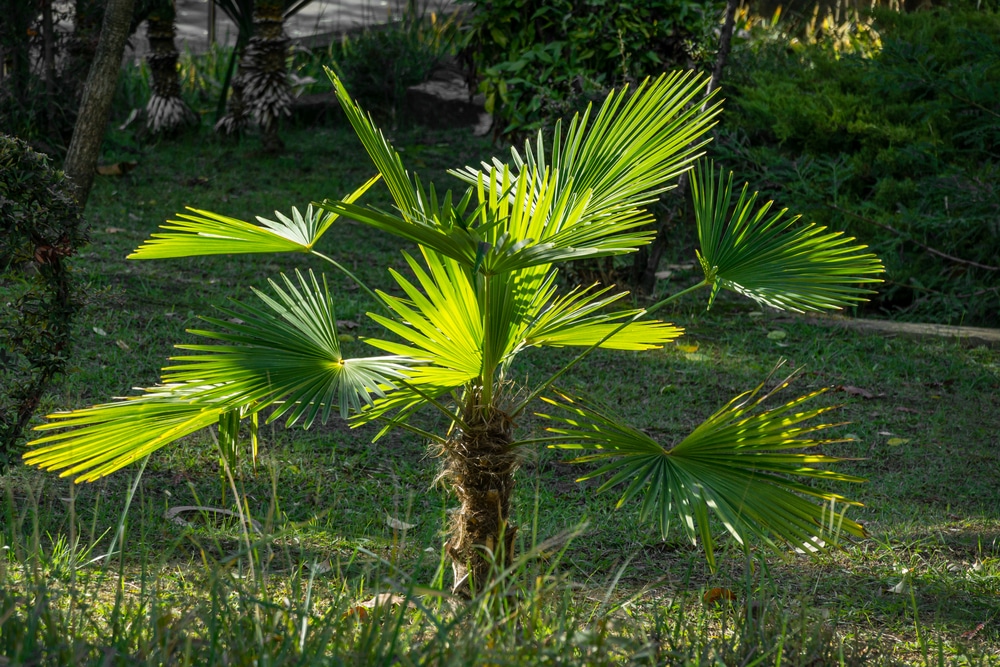
The Chinese Fan Palm is extremely popular in Florida and also quite a perfect indoor home choice to add a little spice to your living room or study. These trees have a single trunk that stands straight upright and long, fanning leaves of light to medium green that can reach up to 6 feet in length! It is slow growing but we should note, it may reach a fully mature indoor height of 8 feet – but at 6 to 8 inches of growth per year you will have time to prepare.
Your best soil mix for a Chinese Fan Palm of your own is 2 parts peat moss potting mix along with 1 part of sharp sand. These plants will tolerate full sunlight but they prefer bright, indirect light, especially when young. Watering frequency may vary a bit, so start off watering your tree once a week and check the top half of the soil. Whenever the top half is dry, it’s time to water, so this is how you’ll determine the perfect schedule for your own tree in your specific locale.
16. Majesty Palm – Ravenea rivularis
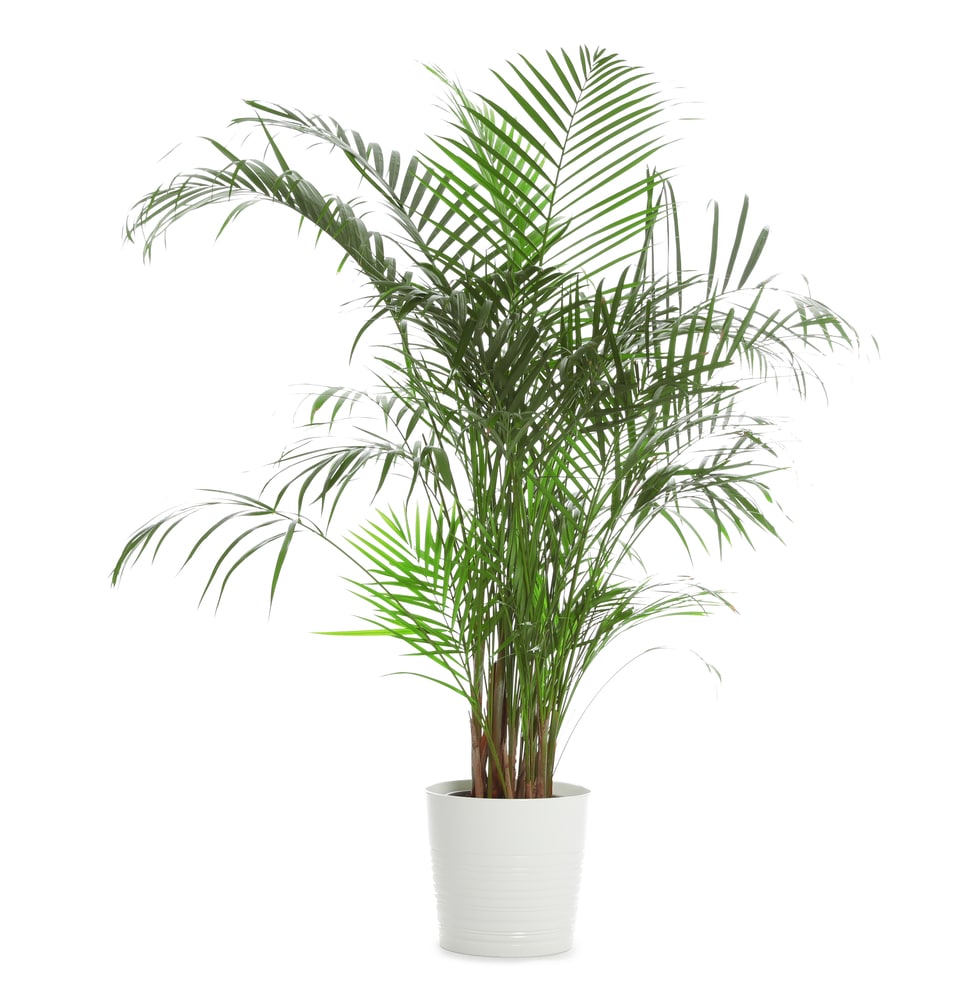
The Majesty Palm adds a touch of class wherever you deem to place it. With multiple, light-green stems and rich, long and deep green leaved fronds, this plant is definitely on the handsome side. Don’t let the size at the store fool you, however. This plant grows to be 98 feet in the wild! Don’t panic, though, as they will typically top out at 10 feet indoors and grow about a foot a year until they get there.
The native Madagascar Palms do best in a soil mix comprised of 2 parts peat moss, 2 parts sand, and 1 part loam. Sunlight requirements for this tree are bright, indirect sunlight, for 4 to 6 hours per day and your Majesty Palm needs watering once or twice a week or whenever the top inch of soil is dry.
17. African Candelabra – Euphorbia ammak
Our final indoor tree is included for the more eccentric or desert aficionados out there. The South African Candelabra is a treelike succulent that grows a short, powerful trunk with stout branches which are light green or solid white in color and yes… cactus barbs are present, so this might not be a good fit if you have kids in the house. That said, indoors they should reach a top height of a little over 8 feet, while outdoors they can reach a little over 20. If you like the idea of a giant white ‘cactus’ in your home, then the African Candelabra will fit the bill exquisitely.
Cactus and succulent potting soil is easy to get and a perfect fit for your African Candelabra. Give it as much direct sunlight as you can, of course, and placement by a south or west window should do the trick nicely. Watering for this plant is the easiest on the list, as you might imagine, with once every 2 weeks in the summer being ideal and once a month in the winter – just make sure the soil dries out completely being waterings for best results!
18. Money Tree – Pachira aquatica
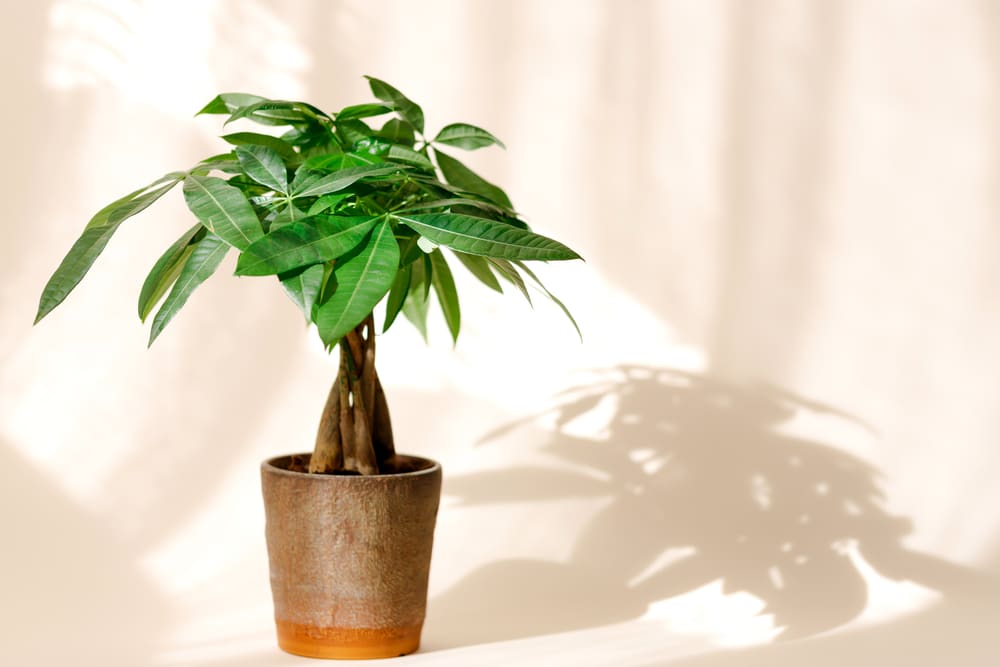
Money Trees are popular indoor plants due to their unique braided trunks and lush, green leaves. They thrive in bright, indirect light and prefer a thorough watering only when the top layer of soil is dry. Their care difficulty level is relatively low, making them a great choice for beginners.
19. Rubber Tree – Ficus elastica
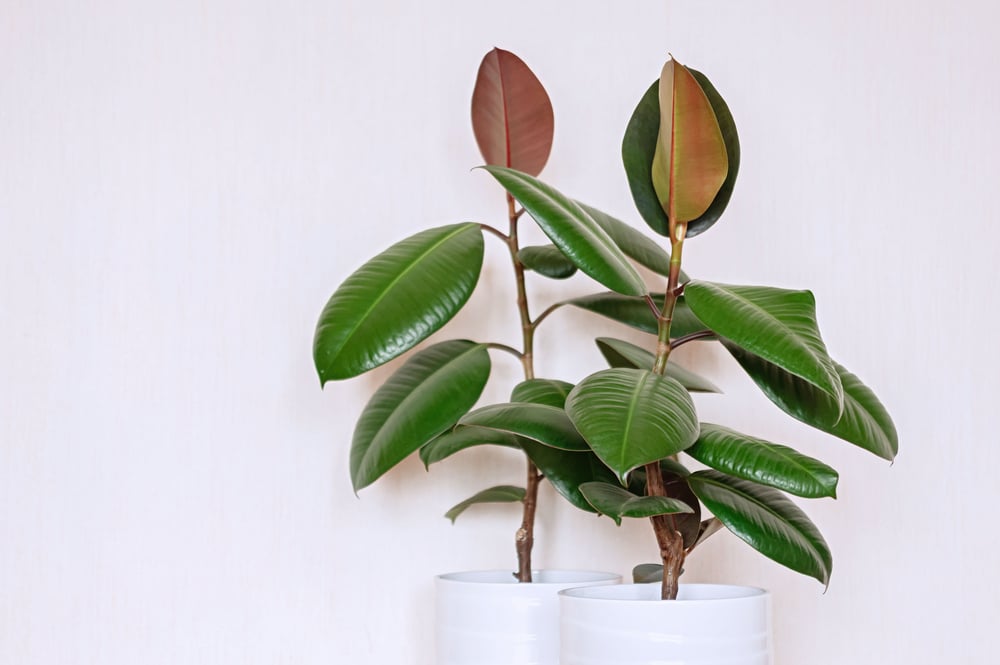
Noted for its dark, glossy foliage, the Rubber Tree prefers bright, indirect light but can tolerate lower light conditions. Water when the soil is dry, but don’t overdo it. This plant is moderately difficult to care for, requiring consistent care but forgiving occasional lapses.
20. Corn Plant – Dracaena fragrans
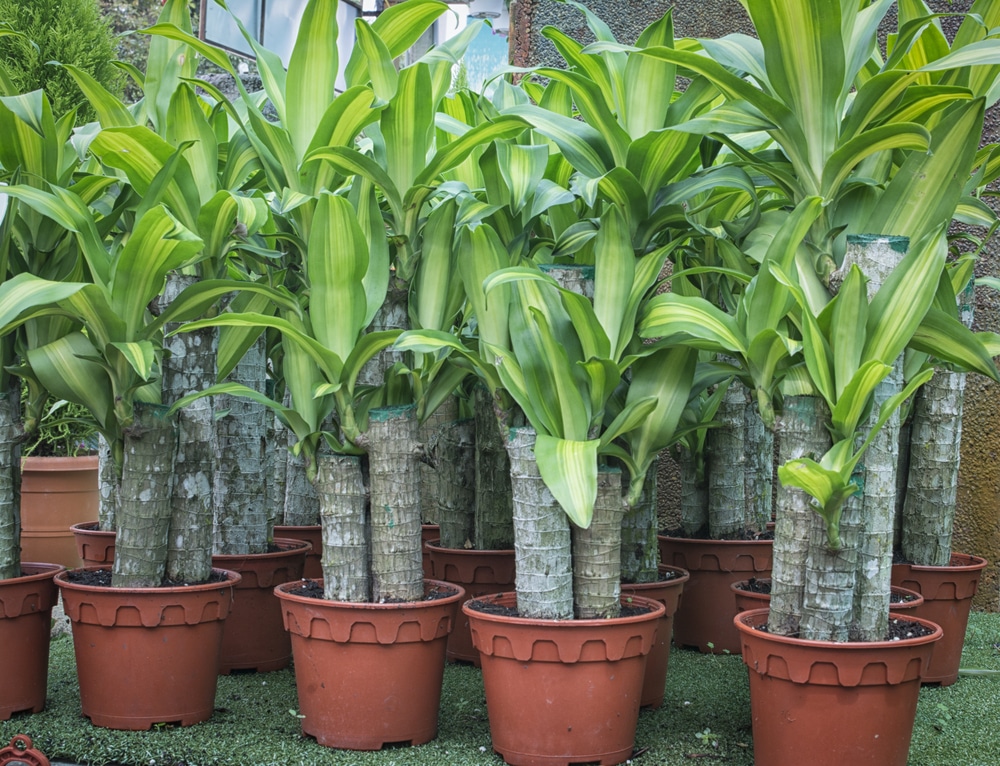
Corn Plants are attractive indoor trees that can reach several feet in height. They do best in medium to bright indirect light and prefer to dry out between waterings. Their care level is easy to moderate, tolerating a fair amount of neglect.
21. Jade Plant – Crassula ovata
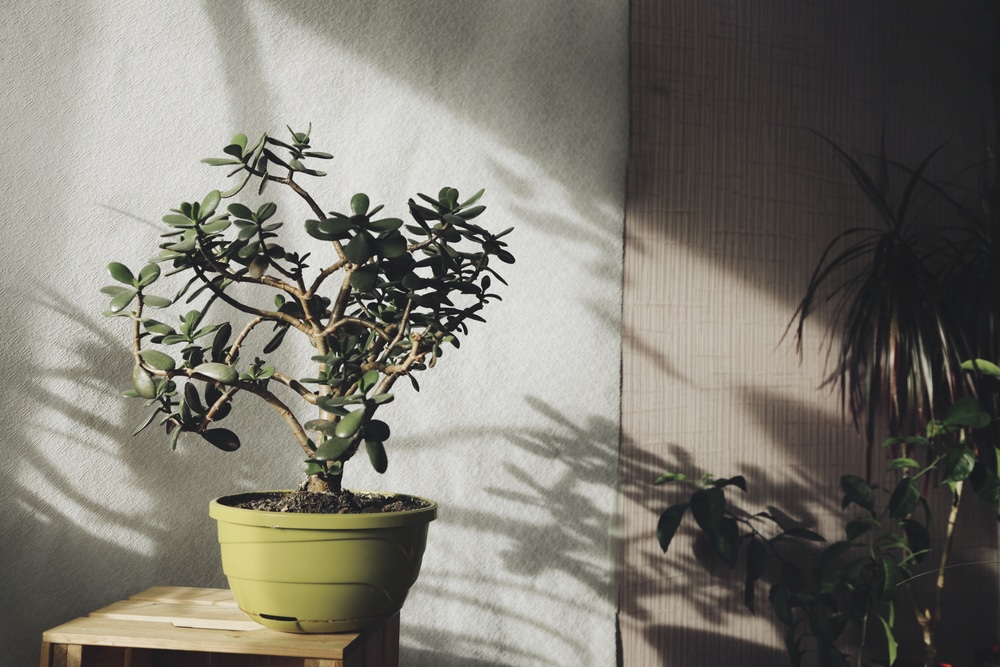
Known as the “money plant,” Jade Plants have succulent leaves and thick, woody stems that mimic the look of a tree. They prefer bright light and require well-draining soil that should be allowed to dry between waterings. They are easy to care for, making them perfect for beginners.
22. Kentia Palm – Howea forsteriana
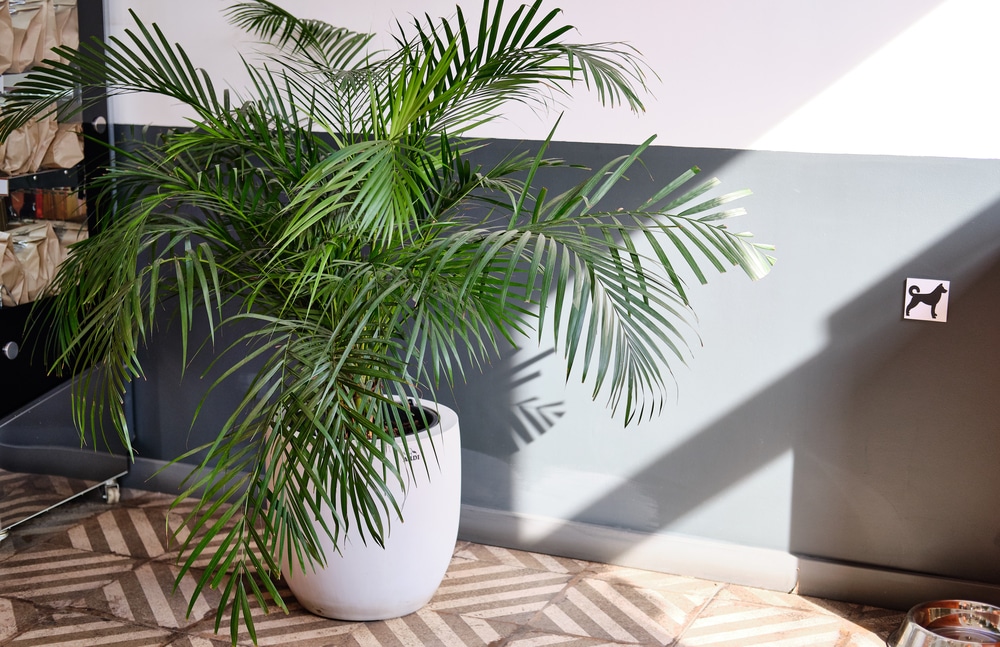
This elegant palm variety is a slow grower but can eventually reach substantial heights indoors. It prefers low to bright indirect light, making it adaptable to various indoor environments. Water when the top inch of soil is dry. It has a moderate care level, requiring attention to watering and light conditions.
23. Fiddle Leaf Fig – Ficus lyrata
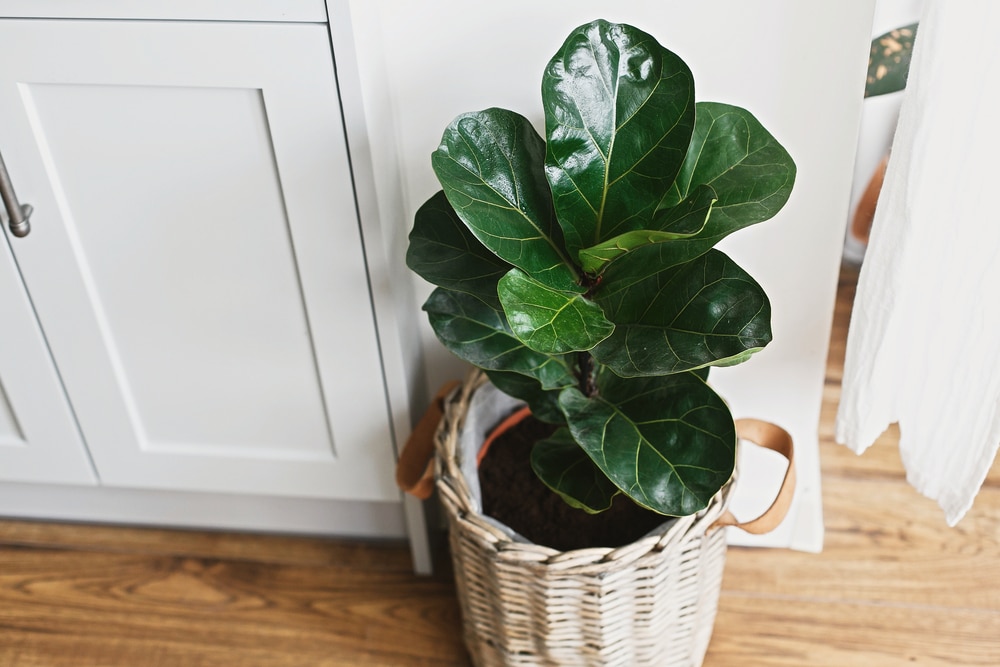
This plant is a trendy indoor tree known for its large, violin-shaped leaves. It thrives in bright, filtered light and prefers to dry out between waterings. However, it can be fussy and is considered a more challenging plant to care for, requiring consistency and attention to detail.
24. Sago Palm – Cycas revoluta
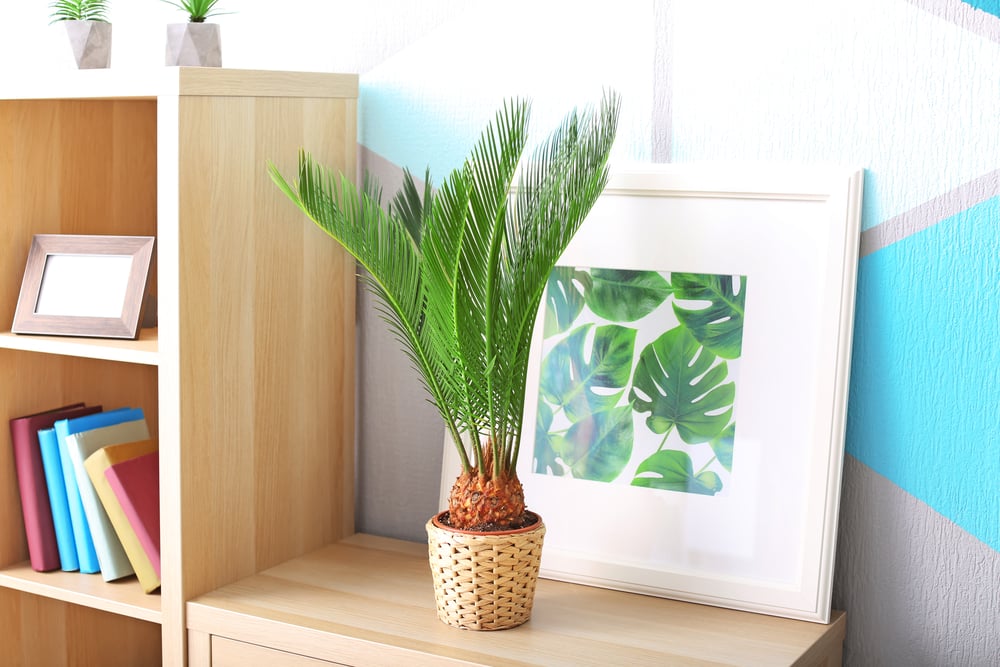
This palm-like plant adds a tropical touch to interiors. It prefers bright, indirect light and should be watered deeply but infrequently, allowing the soil to dry out between waterings. Sago Palms are somewhat challenging to maintain indoors, requiring diligent care.
25. Lemon Tree – Citrus limon
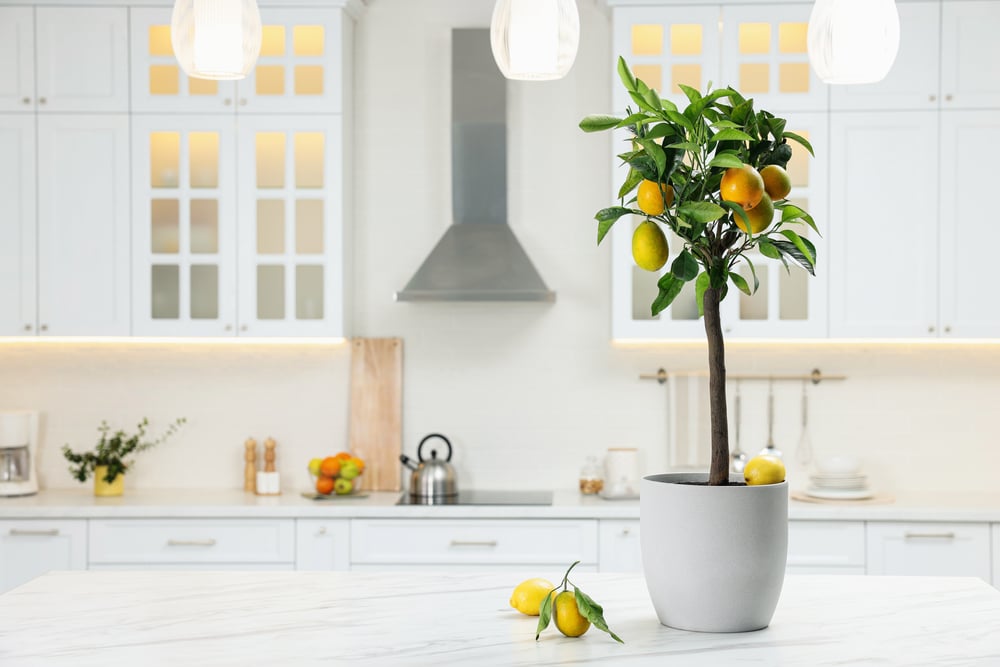
Indoor lemon trees can bear fruit and fill a room with a fresh, citrusy aroma. They need lots of sunlight, ideally 10-12 hours a day, and regular watering with excellent drainage. The care difficulty is moderate, as they can be sensitive to overwatering and require a good deal of light.
Conclusion
We hope that you’ve enjoyed this little exploration into 17 types of indoor trees that you can host happily in your home. Be sure to follow our care steps to a ‘T’ and your new trees should do well. Just be repot them at the frequency your nursery or personal research recommends and you should be enjoying these indoor beauties for many years to come.
We’ll talk to you again soon and in the meantime, we wish you and your new trees the very best!

